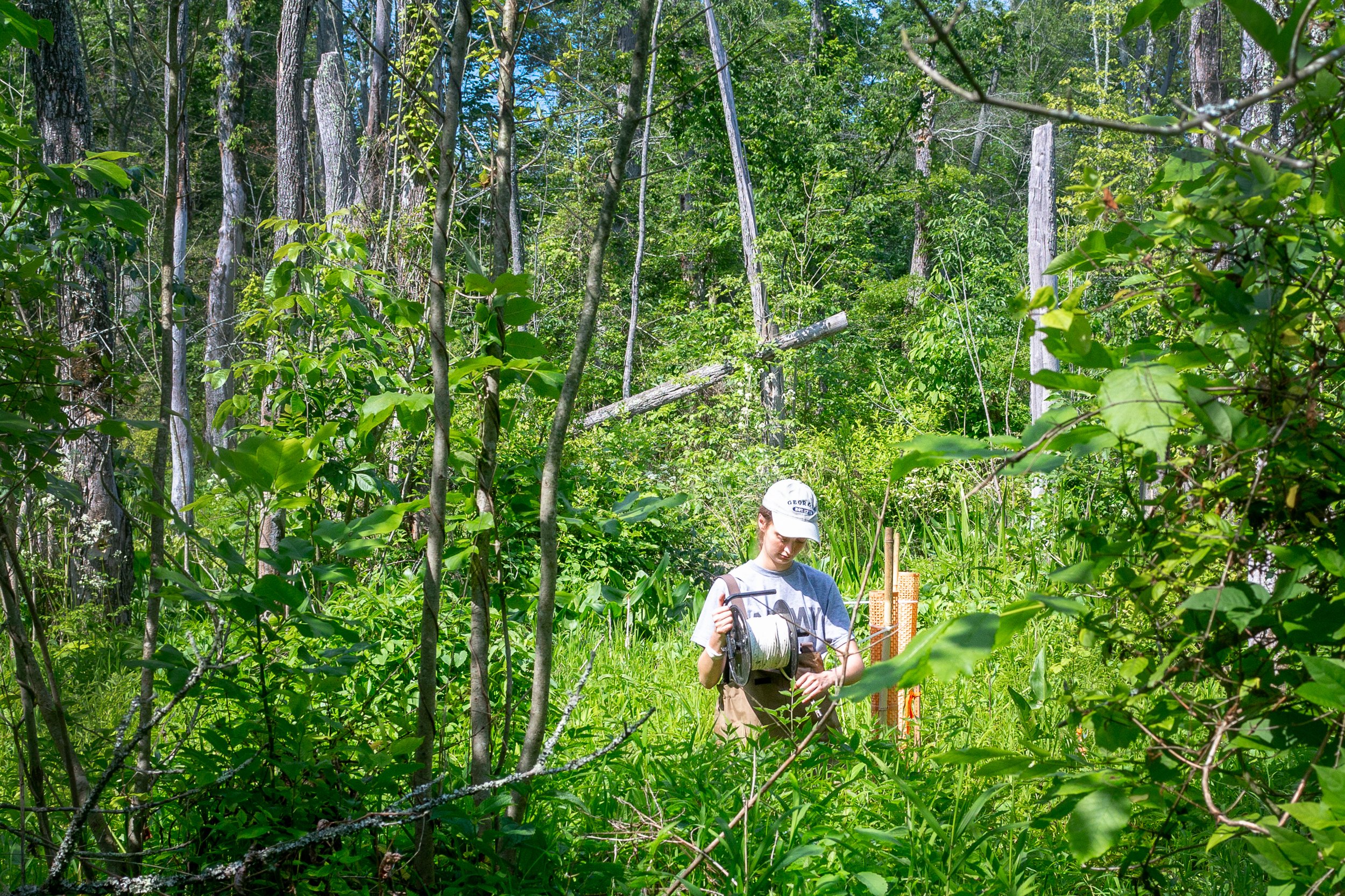
Piscataway Park, Maryland
The Response
Emerald ash borer has been called the most devastating insect ever to strike American forests. It kills nearly every ash tree it infests, and no one has found a way to eradicate it. It’s been detected in 36 states and the District of Columbia.
Yet scientists have found ways to protect trees from this dire threat. Treating individual trees every few years with insecticides can keep them alive. The Nature Conservancy and Maryland state agencies have treated select trees in wetlands to keep seed sources available even as most trees are wiped out. Unfortunately, treatments were not done this year, setting the effort back.
In the longer term, scientists hope that tiny wasps that parasitize emerald ash borer larvae can reduce populations to levels that trees can tolerate. Federal agencies have released these wasps in at least 30 states. University of Maryland entomologists are assessing the effectiveness of such strategies in Maryland ash forests.
In a parallel effort, scientists are collecting seeds from rare ash trees that survive longer than their peers, and breeding offspring from these seeds to create trees that may be resistant to the ash borer. This work is being led by federal scientists in Ohio and has shown promising signs of success.
Native tribes in the Midwest, New York and New England have also collected and conserved seeds to ensure the future of Black ash trees, which they rely on as materials for basket making, an important cultural tradition.
These strategies may save individual trees and prepare for the eventual restoration of ash, but they will not save ash-dominated wetlands from profound transformation. To do that, scientists are experimenting with planting new types of trees to take the place of ash. Swamp white oak has shown promise in test plantings Minnesota and Maryland; baldcypress is also performing well in Maryland. Some of the tribes that are working to conserve black ash are also pioneering strategies to maintain the integrity of forested wetlands after ash trees disappear.
Together, these strategies could help ash forests survive the most severe threat they have faced in thousands of years. But these solutions are costly and most are being done on a shoestring. To be implemented at a landscape scale, far more funding will be needed.
Angela Waupochick, a doctoral student in Forest and Wildlife Ecology at the University of Wisconsin-Madison, monitors the water use of a black ash tree on the Menomonee Reservation, Keshena, Wisconsin
Ecologist Diane Leason of the University of Maryland measures saplings, Nanticoke River wetland
Entomologist Stokes Aker of the University of Maryland examines the effect of parasitoid wasps on emerald ash borer larvae, Patapsco Valley State Park


